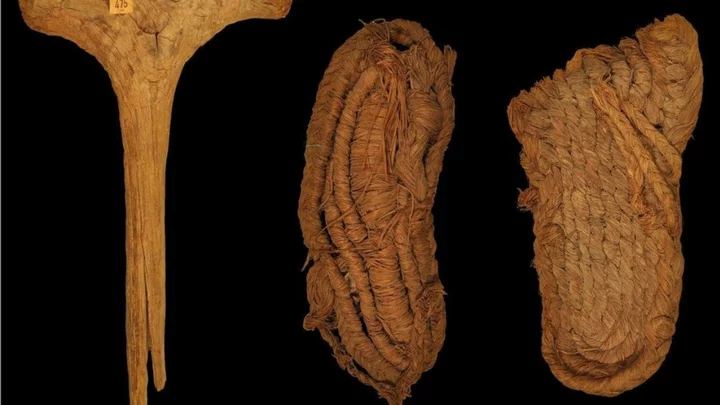A pair of shoes thought to be the oldest ever found in Europe are now estimated to be even older than scientists had previously thought.
About 20 pairs of sandals found in southern Spain are at least 6,200 years old, while other woven objects found in the cave date back 9,500 years, according to a new study.
The scientists used carbon-dating on 76 objects found in the Cueva de los Murciélagos, Albuñol, near Granada, which were originally discovered by miners in the 19th century.
The objects are particularly valuable to science because they represent the first direct evidence of certain hunter-gatherer skills, such as weaving, in southern Europe.
They are made of wood, reed and esparto grass. The shoes measured about eight inches in length.
The study was published in the journal Science Advances by a team from the Universidad de Alcalá (UAH) and the Universitat Autònoma de Barcelona (UAB).
Francisco Martínez Sevilla, a researcher at the Prehistory Department of UAH, said: “These are the earliest and widest-ranging assemblage of prehistoric footwear, both in the Iberian Peninsula and in Europe, unparalleled at other latitudes.
“The new dating of the esparto baskets from the Cueva de los Murciélagos of Albuñol opens a window of opportunity to understanding the last hunter-gatherer societies of the early Holocene.
“The quality and technological complexity of the basketry makes us question the simplistic assumptions we have about human communities prior to the arrival of agriculture in Southern Europe.”
He said the project placed the cave as “a unique site in Europe to study the organic materials of prehistoric populations”.
Cueva de los Murciélagos, or “Cave of the Bats,” is located on the coast of Granada, to the south of the Sierra Nevada.
The finds are thought to have been so well-preserved because of low humidity levels in the area.
Study co-author María Herrero Otal added: “The esparto grass objects from Cueva de los Murciélagos are the oldest and best-preserved set of plant fibre materials in Southern Europe so far known.
“The technological diversity and the treatment of the raw material documented demonstrates the ability of prehistoric communities to master this type of craftsmanship, at least since 9,500 years ago, in the Mesolithic period.
“Only one type of technique related to hunter-gatherers has been identified, while the typological, technological and treatment range of esparto grass was extended during the Neolithic from 7,200 to 6,200 years before the present.”
Sign up to our free Indy100 weekly newsletter
Have your say in our news democracy. Click the upvote icon at the top of the page to help raise this article through the indy100 rankings.

